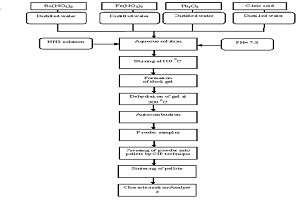Day 2 :
Keynote Forum
Michael K.H. Leung
City University of Hong Kong,China
Keynote: Photocatalytic fuel cell for wastewater treatment and recovery of energy resources
Time : 10:15-10:55

Biography:
Michael K.H. Leung is a Professor and Associate Dean in the School of Energy and Environment at the City University of Hong Kong. He is also the Director of Ability R&D Energy Research Centre at CityU. The areas of his experties include solar photocatalysis, fuel-cell electrochemistry and advanced refrigeration and air-conditioning. He is listed as a highly cited scholar in energy science and engineering by ShanghaiRanking and Elsevier. He has published 130+ journal papers, 70+ conference papers, 15 books/book chapters, and 6 patents. Prof. Leung is also a Past Chairman of the Energy Institute (Hong Kong Branch), Chairman in HKIE Education and Examinations Committee, a Chartered Engineer, and a Registered Professional Engineer.
Abstract:
Photocatalytic fuel cell (PFC) is primarily a synergistic integration of two emerging technologies, namely, photocatalysis (PC) and fuel cell (FC). Solar PC can decompose organic compounds while FC provides an electrical potential gradient to facilitate transport of electrons [1]. Therefore, PFC can be effectively applied to utilize solar energy for wastewater treatment and recovery of energy chemically stored in wastewater [2,3]. It is a promising technology for solving both environmental and energy problems. In order to conduct proper research for rapid development of PFC, we need to have good knowledge about the material properties and clearly understand the cell mechanisms of PFC. The Fermi level between the photoanode and the cathode forms interior bias that inhibits recombination of photogenerated electrons and holes, resulting in increase in visible-light activation of PFC [4]. Modification of photoelectrocatalysts and use of microfluidics are effective strategies for improving the PFC performance [5,6]. The PFC effects can also be manipulated by the system configuration, design and control for specific outputs and reaction rates. The speaker will present the fundamentals, latest development of PFC, and upcoming R&D challenges needed for enhancing the PFC technology.
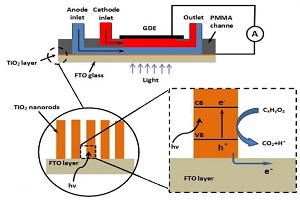
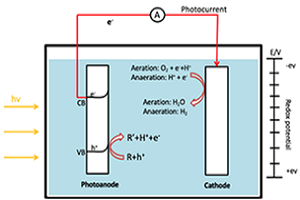
Keynote Forum
Wilfried G.J.H.M. van Sark
Utrecht University,Netherlands
Keynote: Smart Solar Charging to support widespread deployment of photovoltaic systems and electric mobility
Time : 11:15-11:55

Biography:
Wilfried van Sark is associate professor at the Copernicus Institute of Utrecht University. He has over 30 years experience in the field of photovoltaics, ranging from thin film silicon and III-V solar cell experimental and modeling development and testing to solar cell processing development, out- and indoor performance of solar cells, policy and cost development. His current activities focus on employing spectrum conversion (down/up conversion) using nanocrystals to increase solar cell conversion efficiency for next-generation photovoltaic energy converters as well as performance analysis of (BI)PV systems in the field, in particular linked to the development of smart grid systems in the built environment.
Abstract:
Statement of the Problem: The transition to low carbon energy and transport systems requires not only the large-scale adoption of clean technologies and efficiency measures, but also new energy management strategies to efficiently incorporate these innovations. Grid integration of supply side technologies such as photovoltaics (PV) and demand side ones such as electric vehicles (EV) requires proper strategies for energy management. Smart solar charging using vehicle to grid (V2G) technology is a key element in matching supply and demand on a local level. Optimization of self-consumption and self-sufficiency would lead to lower stress levels on the local distributions grid. Methodology & Theoretical Orientation: The smart solar charging concept has been pioneered in Utrecht, and now will be extended in other pilot areas with different demographic characteristics. Analysis of PV generation and EV charging behavior will be combined with algorithm development, in order to optimize self-consumption and self-sufficiency. Findings: Increased self-consumption of PV can be reached only if car use agendas are known in combination with perfect solar forecasting. Conclusion & Significance: Smart solar charging has benefits in many ways: more EVs powered with clean energy, better local air quality, increased social cohesion due to the sharing aspect, lower amount of cars in the streets. Investment in local grid extension can be postponed, leading to economical benefits for distribution system operators and consumers.
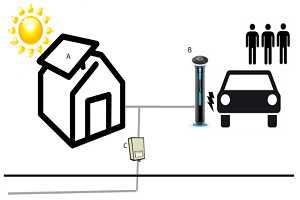
- Track 3:Bioenergy | Track 7: Advanced Technology
Session Introduction
Martin Mittelbach
University of Graz, Austria
Title: Future Perspectives of Advanced Biofuels
Time : 12:00-12:30

Biography:
Martin Mittelbach is a leading scientist in the field of biodiesel since over 30 years. Since 1993 he is head of the working group: „Chemistry and technology of renewable resources“ at the University of Graz, Austria. He is the author of over 110 scientific publications in reviewed journals, editor and author of several books on biodiesel and he is inventor of several patents on biodiesel production technologies. He has had cooperations and projects on biodiesel with numerous national and international research organisations, he was invited for key presentations or guest professorships at bioenergy conferences and research organisations around the world. In 2015 he received the European Lipid Technology Award from the European Federation for the Science and Technology of Lipids.
Abstract:
Biofuels are fuels produced from any kind of biomass source, which could be the whole biomass like plants or wood, fermented biomass for biogas and biomethane or extracted products like fats and oils. There is a big variety of different fuels existing (Figure 1), however, the most developed fuels are bioethanol and biodiesel, which have been commercialized worldwide since over 20 years. There are many national and global mandates and incentives existing in order to promote biofuels; the main goal of these actions is the overall reduction of green house gas emissions. Advanced biofuels are fuels which lead to a significant reduction of greenhouse gases, e.g. fuels from waste and non food feedstocks, or are so-called drop in-fuels which could be used in higher blends in special applications like aviation fuels.
The paper gives an overview on the latest developments of technology and utilization of advanced biofuels but also describes the future and perspectives of biofuels. Especially the different legislations, e.g. the latest development of the European Directive of Renewable Energy are highlighted. As environmental issues like sustainability and life cycle assessment (LCA) have been discussed quite controversially, especially the food vs. fuel discussion, direct and indirect land use change, this presentation tries to evaluate the pros and cons to give a proper basis to evaluate the future potential of biofuels.
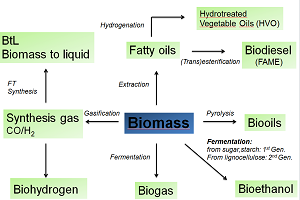
Aidan M Doyle
Manchester Metropolitan University, UK
Title: Zeolite catalysts prepared from shale rock and kaolin for biodiesel synthesis
Time : 12:30-13:00

Biography:
Aidan M Doyle is an Industrial Chemist and Faculty Member in Physical Chemistry at Manchester Metropolitan University, UK. He has conducted his PhD at the
University of Limerick and he was a Post-doctoral Research Fellow at the Fritz-Haber-Institute of the Max-Planck-Society, where he worked on a Johnson Matthey/
EPSRC funded project exploring the interaction of hydrogen and hydrocarbons with precious metal heterogeneous catalysts. He is also a Guest Editor of Catalysis
Today, a Committee Member and former Treasurer (2012-2016) of the British Zeolite Association (BZA) and was the main Organizer of the Gordon style 2009 BZA
meeting.
Abstract:
Biodiesel is an alternative fuel produced by the transesterification of natural oils using heterogeneous catalysis. Here, Faujasite (FAU) zeolites were prepared using Iraqi kaolin and Irish shale rock and tested as catalysts in the esterification of oleic acid (a simulated fatty acid frequently used as a model reaction for biodiesel production). For preparations using shale rock; a systematic study was conducted (over the stated preparation ranges) by varying the Water:Shale ratio (4:1 to 15:1, by mass) and mixing (1-24 hours), aging (6-48 hours) and hydrothermal treatment times (6-72 hours) to determine the optimal parameters. XRD confirmed that the Faujasite product purity was highly dependent on the experimental conditions used and that its crystal purity was comparable to that of a commercial zeolite Y. The BET surface area of the calcined FAU-type zeolite was 571 m2g-1. The prepared zeolite was catalytically active in the esterification of oleic acid with ethanol reaching a maximum of 78% conversion after 90 minutes, which is practically identical to that recorded for commercial zeolite Y for preparations using kaolin; XRD confirmed the characteristic FAU structure of zeolite Y (Si/Al ratio 3.1), and BET adsorption showed that the surface area was 390 m2g-1. The optimum conditions for the oleic acid esterification were observed at 70 °C, 5 wt% catalyst loading and 6:1 ethanol to oleic acid molar ratio. The oleic acid conversion using the zeolite prepared from kaolin was 85% after 60 minutes, while the corresponding value for a commercial sample of HY zeolite was 76%. Our findings show that low Si/Al ratio zeolite Y is a suitable catalyst for esterification, which is in contrast to the widespread view of the unsuitability of zeolites, in general, for such applications. A full set of data showing structural characterization and catalytic testing will be presented at the conference.
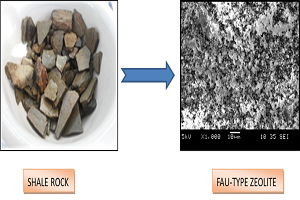
Soo-Young No
Chungbuk National University, Korea
Title: Application of bioethanol in dual-fuel combustion – A review
Time : 13:45-14:15

Biography:
Soo-Young No has his expertise in atomization and sprays, combustion and emission characteristics in applying the liquid biofuels to internal combustion engines, particularly compression ignition engines. The review papers on liquid biofuels published by him include the biodiesel obtained from inedible vegetable oils (Renewable and Sustainable Energy Reviews 2011,131-140, Atomization and Sprays 2011,87-105), alcohols such as methanol, ethanol (submitted to Applied Energy) and butanol (Fuel 2016, 641-658), bio-oil (Renewable and Sustainable Energy Reviews 2014, 1108-1125), straight vegetable oil (Renewable and Sustainable Energy Reviews 2017, 80-97), BTL diesel, hydrotreated vegetable oils (Fuel 2014, 88-96).
Abstract:
According to the importance of ethanol as an alternative biofuel and the current research trends towards more advanced internal combustion (IC) engine, it is required to fully understand the combustion and emission characteristics of advanced CI engines fuelled with ethanol. The main concern in this review is the application of bioethanol to one of advanced compression ignition (CI) engines, dual-fuel combustion (DF). DF combustion strategy is one idea to overcome the challenges of HCCI combustion mode. HCCI is limited to low loads because at high loads, the occurrence of excessive pressure rise rates resulted in the pressure ringing and audible noise. The aim of this study is to provide a comprehensive overview of the literature on the application of bioethanol in DF combustion. This review is a part of an on-going review project of application of bioethanol to the advanced CI engines. In this review, it is found that the method for ethanol-diesel dual fuel combustion in CI engine can be divided into four categories: i.e.1) PFI of the ethanol and DI of the diesel in cylinder, 2) PFI of the diesel and DI of the ethanol, 3) dual fuel direct injection, 4) ethanol PFI and diesel DI with split injection. Of four techniques, the ethanol PFI and diesel DI was the prevailing technique to be studied in the dual fuel combustion. Instead of neat ethanol, E85 was introduced by several researchers to DF combustion mode. However, there is only one study introduced the hydrous ethanol in ethanol-diesel DF combustion mode. In addition, instead of neat diesel fuel, biodiesel was utilized as the ignition source. In this case, biodiesel produced from the inedible vegetable oils are more desirable. The parameters affected to DF combustion include premixed ratio, compression ratio, injection pressure, exhaust gas recirculation (EGR), intake boost, diesel pilot timing and intake temperature. To quantify the ratio of two fuels in any DF configurations, three different bases, i.e. mass flow basis, energy basis and power basis were introduced. The energy basis was the prevailing method for evaluation. In the DF combustion mode, a higher premixed ratio up to 66% was capable of decreasing NOx and soot emissions, while incomplete combustion products such as HC and CO were generally higher than those of conventional diesel combustion. It was found that the wide
range of values was introduced for the acceptable PRR and COVIMEP. The use of ethanol in DF combustion in CI engines is suitable for the high load LTC enabling.
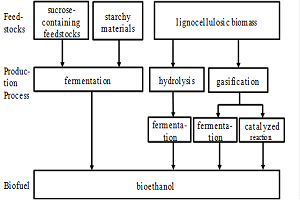
Eyad H R Fadda
Sultan Qaboos University, Oman
Title: The use of Remote Sensing and GIS to determine changes in Land Use: Causes of Land Degradation in Barka Province, Oman
Time : 14:15-14:45

Biography:
Eyad. H. R. Fadda is with Department of Geography, Faculty of Arts and Social Sciences, Sultan Qaboos University, Muscat, Sultanate of Oman, His research area includes the application of GIS and Remote sensing in Geo-sciences, Natural Geo-Hazards and Environment. He is a member in many National and International Committees and Journal Editorial boards. He has been involved in many applied research projects, in various areas of Jordan, Saudi Arabia and Oman. He has more than 40 scientific paper and an article in the international scientific journals and in international conferences.
Abstract:
Many studies indicated the increase of the proportion of urban areas over the arable land in many provinces of the Sultanate Oman, this came as a result of urban growth and development processes taking place since the era of the Renaissance which started in 1970. Consequently, spatial variation in land use is an important issue to be taken in to consideration, because lands may be converted to be less productive, due to the lack of raw soil, vegetation and water. Moreover, the human exploitation of the limited resources in different ways, in addition to the natural factors of droughts and floods and urbanization all that will eventually lead to land degradation. Barka province (wilayat) in al Batinah Governorate one of provinces, which has been affected by land use, changes due to several reasons. Therefore, this study will focus on determination of land use changes, whether commercial or residential that have been occurred in the province, in addition to the loss of agricultural areas and fertile land during the period from 2010 to 2014. Remote sensing and geographic information system (GIS) were utilized in order to delineate and to determine the cause of shrinking in the arable land and fertile land. Satellite images were used to detect the change in land use/land cover by applying selective digital image processing techniques such as supervised classification and change detection. Thematic maps were prepared using GIS software with attribute data about the land uses in the study area, which highlight and show the impact of urban growth on land degradation.
Rania Mona Zeid Alqaralleh
University of Ottawa, Canada
Title: Biogas Recovery from Hyper-thermophilic Anaerobic Co-digestion of Thickened Waste Activated Sludge, Organic Fraction of Municipal Solid Waste and Fat, Oil and Grease
Time : 14:45-15:05

Biography:
Rania Mona Zeid Alqaralleh is a PhD candidate in the Department of Civil Engineering at the University of Ottawa, Canada. Her doctoral work investigates the thermophilic and hyper-thermophilic anaerobic co-digestion of thickened waste activated sludge and fat oil and grease (FOG), liquid portion of FOG (L-FOG) and organic fraction of municipal solid waste (OFMSW). Her research aims to improve the biogas production from solid organic waste using different waste combinations, pretreatment methods and thermal enhanced treatment.
Abstract:
In the light of climate change, environmental challenges and raising demand on energy, the quest toward developing renewable energy has become an urgent necessity. Renewable energy industries, investments, and related policies have been developed incredibly fast in the recent years [1]. A potential renewable energy source is biogas harvested from different types of organic wastes. Anaerobic digestion (AD) is one of the leading methods applied for generating biogas from organic waste. However, the biogas utilization in wastewater treatment plants (WWTPs) is still limited; for example, in the US less than 10% of the WWTPs produce biogas for beneficial use such as heat and power generation [2]. The WWTPs industry is facing real challenges in deploying the biogas production and utilization, such as; the slow biogas generation rate during the AD process, the low energy content (methane%) of the biogas, and the costs to upgrade the biogas [2,3]. In this study the anaerobic co-digestion of thickened waste activated sludge (TWAS) and the suitable organic wastes will be used to overcome some of the significant economic challenges by improving the AD process, increasing the biogas production with higher methane content, and reducing the final volume of waste. The feasibility of using hyper-thermophilic anaerobic co-digestion of TWAS, organic fraction of municipal solid waste (OFMSW), and fat, oil and grease (FOG) in producing biogas from solid waste will be established. The hyper-thermophilic co-digestion at high temperature (70áµ’C) has the potential to improve the anaerobic degradation of the organic waste mixture [4]. Whereas the use of OFMSW and FOG with the right concentrations will not only improve the C: N ratios in the digestion mixture leading to a significant increase in biogas production, but it also helps in converting these organic waste streams from landfills and that means increasing the lifespan of existing landfills and improving the sustainable development by improving waste to energy conversion.
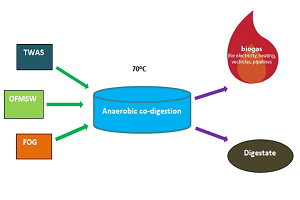
Parinaz Bashi Shahabi
Iran University of Science and Technology, Iran
Title: Using multi attribute theory for making trade-offs between material, quality, cost and sustainable product development
Time : 15:05-15:25

Biography:
Parinaz Bashi Shahabi is masters' student at Iran University of Science and Technology. She received her BSc degrees in department of metallurgy and material engineeringfrom Ferdowsi University of Mashhad. Her research activities and master's thesis include sustainable designs, product development. She has researched on synthesis of advanced materials andis interested on sustainability of final design by using environmental materials and increasing quality. She did several researches on cost and quality of some advanced materials which are synthesized by her. She also did some works on steel’s friction spot welding by testing relative factors on welding which is strongly beneficial for environment, cost and quality of welding.
Abstract:
The decisions made during product development (PD) lock in 70–80% of the total product cost, and the quality of the product is also largely fixed. Therefore, decisions which are taken during the PD process have a great influence on product life cycle cost, quality and sustainability. The most important point of the PD process where trade-offs are made is in the concept phase when defining design specifications based on customer requirements. Developing a model to support trade-offs for sustainable PD is a significant concern for designers. This research attempts to consider these features simultaneously to make trade-offs between environmental issues and other customer requirements to select the best design specifications on their basis. In this research, sustainability is considered as a customer requirement, which then is translated into design specifications. Sustainable design is treated as an optimization problem to maximize value-added activities while minimizing environmental effects. A scoring model is defined to model sustainability, quality and cost in the PD process in order to find the optimum level of their combination therefore.
Juan S Chirivi-Salomon
University of the Andes, Colombia
Title: Enhancement of laccase activity in semi-solid culture of Pleurotus ostreatus by Cordyceps extract supplementation
Time : 15:45-16:05

Biography:
Juan S Chirivi-Salomon is a Chemical Engineer and Microbiologist, who has acquired expertise in basic Mycology throughout his careers. His work on entomopathogenic fungi, in collaboration with Dr. Tatiana Sanjuan, revealed two new species of Cordyceps with notorious potential in pharmaceutical and biofuel industries. In his Master of Science project, he has acquired huge knowledge about metabolomics of fungi, focusing his work in the industrial potential of fungal metabolites. He is researching on the effect of Cordyceps metabolites in the laccase production for lignocellulosic biomass treatment. In collaboration with Dr. Rocio Sierra, he is exploring new opportunities in the application of fungi and their metabolites in bioenergy industry. His work hope is to link different academic institutions and social foundations.
Abstract:
Laccases are multinuclear copper-containing proteins that catalyze the oxidation of aromatic and non-aromatic compounds in presence of molecular oxygen. Laccases are naturally produced by higher plants, insects, bacteria, and fungi. Nevertheless, white-rot mushrooms are currently desirable for the biofuel industry because of their diversity and versatility. From this group, the edible mushroom Pleurotus ostreatus (oyster mushroom) has been recently, widely studied due to its capacity to colonize several lignocellulosic substrates, among other properties. A previous research study showed the metabolomic profile and bioactivity potential of the raw extracts from Cordyceps nidus. Based on the biochemical nature of these extracts, we aimed to evaluate their effect in the laccase activity of P. ostreatus. We used a semi-solid-state system, using rice husk as substrate and a cupric-ion stimulant supplementation, as is previously recommended. A complete experimental design was implemented for metabolites extracted from Cordyceps mycelium growth in four different culture media, with three different solvents. Measurements of 2,2'-azino-bis (3-ethylbenzothiazolin-6-sulfonic acid) oxidation and extracellular glucose-content were performed as response variables. Peaks of enzymatic activity were found reaching over 8.000 U L-1 within the studied time. However, only water-fractioned extracts were found significantly different from experimental controls (p-value<0.05), without Cordyceps extracts addition. In conclusion, aqueous extracts of C. nidus cultured in Sabouraud dextrose agar with yeast
extract and brown rice medium significantly enhanced the laccase activity of P. ostreatus in the pre-stablished culture system. This study is the first report of the application of Cordyceps extracts in the enhancement of recycling treatment processes for lignocellulosic wastes. Studying opportunities by using P. ostreatus in the pre-treatment of lignocellulosic biomass for biofuel production is necessarily increasing. Accordingly, we need to deeply understand the mechanisms by which we could enhance laccase activity of white-rot fungi. A characterization of the bioactive compound is also recommended for future researches.
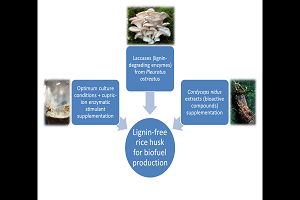
Muhammad Imran Asghar
Government College of Technology Kamalia, Pakistan
Title: Study of chemically synthesized rare-earth terbium substituted bam hex ferrites
Time : 16:05-16:25

Biography:
Muhammad Imran Asghar has worked as a Process Engineer in sugar and glucose production units. He is presently working as a Senior Instructor at Chemical
Technology Department in Government College of Technology Kamalia, Pakistan.
Abstract:
The current study focuses on Barium based rare-earth terbium (Tb3+) substituted M-type hexagonal ferrite materials with nominal composition BaTbxFe12-xO19 (x=0.00, 0.10, 0.20, 0.30) synthesized using Sol-gel auto-combustion technique. The rare-earth terbium (Tb3+) element has been substituted at Fe3+ site to investigate its effect on chemical, electrical and magnetic characteristics of M-type hexagonal ferrite. All the prepared samples were sintered at temperature 1000oC as estimated from the DSC-TGA analyses to obtain the single phase ferrite component. The labeled peaks appeared in different EDX spectra confirm the presence of Ba, Tb and Fe elements in the synthesized compounds. The concentration of (Tb3+) increases, while that of Fe3+ decreases, which shows the replacement of rare-earth terbium (Tb3+) ions with that of Fe3+ ions. XRD analysis confirms the successful formation of single phase rare-earth terbium (Tb3+) substituted ferrite materials. This crystallite range was set up to fall near the value of 65.15-37.35 nm, which is suitable to achieve the best signal of noise for recording components. Scanning Electron Microscopy laboratory analysis exhibits the geometry of grains in hexagonal shape. X-ray density improves from 8.084-8.359 g/cm3 and the bulk density enhances from 5.78-5.93 g/cm3.
